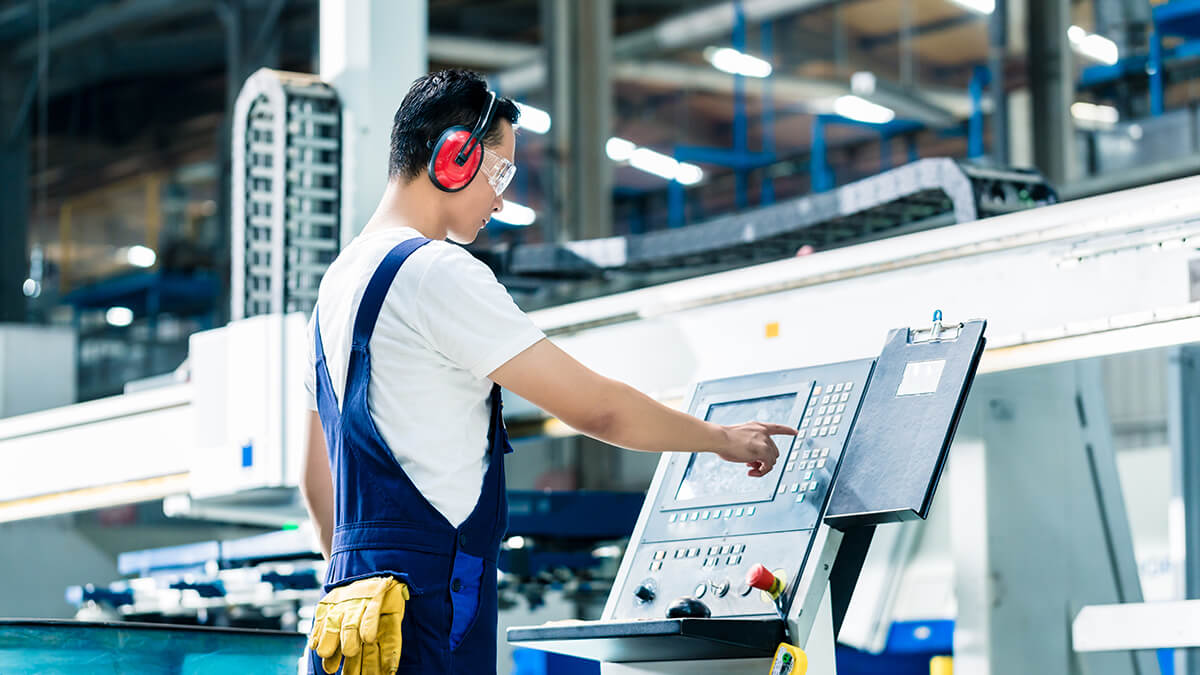What is AOI? It is an automatic optical inspection (AOI) technology. Its advantages include non-contact, fast speed, high accuracy and high stability. It can solve the defects of manual visual inspection in quality management.
In the product manufacturing process, due to various reasons, the components will inevitably produce a variety of defects, such as hole dislocation, scratches, open circuit, short circuit, pollution and other defects on the printed circuit board, the substrate glass and filter of the liquid crystal panel The surface contains defects such as pinholes, scratches, particles, mura, etc., and defects such as cracks, roller marks, holes, and pits on the surface of the steel strip. These defects not only affect the performance of the product but even endanger life safety in serious cases, causing users Great economic loss.
The traditional defect detection method is the manual visual inspection. At present, there are still a large number of industrial workers engaged in this work in many industries such as mobile phones, flat panel displays, solar energy, and lithium batteries. This artificial vision detection method needs to be carried out under strong light illumination, which not only causes great damage to the eyes of the detection personnel, but also has strong subjectivity, limited human eye space and time resolution, large detection uncertainty, and easy to produce ambiguity. Shortcomings such as low efficiency make it difficult to meet the high-speed and high-resolution detection requirements of the modern industry.
With the rapid development of electronic technology, image sensing technology, and computer technology, the use of automatic optical (visual) detection technology for surface defects based on the optical image sensing to replace artificial visual detection of surface defects has gradually become an important means of surface defect detection Because this method has the advantages of automation, non-contact, fast speed, high precision, and high stability.
What is AOI ?
Automated optical inspection (AOI) technology, also known as machine vision inspection (MVI) technology or automated visual inspection (AVI) technology. In some industries, such as flat panel display, semiconductor, solar, and other manufacturing industries, the term AOI is more popular and known. But AOI and MVI / AVI are still slightly different in concept and function.
In a narrow sense, MVI is an emerging scientific technology that integrates image sensing technology, data processing technology, motion control technology, and performs tasks such as measurement, detection, recognition, and guidance in the industrial production process. The basic principle of MVI uses optical imaging methods (such as a camera, or a complex optical imaging system) to simulate the visual imaging function of the human eye, use a computer processing system instead of the human brain to perform data processing, and finally feedback the results to the implementing agency (such as mechanical Hand) to complete various prescribed tasks instead of manpower.
Broadly speaking, MVI is a technology that stimulates and expands the functions of human eyes, brains, and hands. Its definition may have subtle differences in different application areas, but they cannot leave two fundamental methods and technologies. Obtain the required information from the image, and then feed it back to the automatic actuator to complete the specific task. It can be said that the automatic detection technology based on any image sensing method (such as visible light imaging, infrared imaging, X-ray imaging, ultrasound imaging, etc.) can be considered as MVI or AVI. When using optical imaging methods, MVI actually becomes AOI. Therefore, AOI can be regarded as a special case of MVI.
According to different imaging methods, AOI can be divided into three-dimensional (3D) AOI and two-dimensional (2D) AOI. The three-dimensional AOI is mainly used for the measurement of object shape and geometric parameters, part grouping, positioning, recognition, robot guidance, etc.; AOI is mainly used for product appearance (color, defects, etc.) detection, classification of different objects or appearances, detection, and classification of good and defective products, etc.
AOI system composition
At present, the most widely used AOI system in the industry is a simple optical imaging and processing system integrated by general devices such as cameras, lenses, light sources, and computers. As shown in Figure 1, the camera is used to directly image under the illumination of the light source, and then detected by computer processing. The advantages of this simple system are low cost, easy integration, and relatively low technical threshold. It can replace manual detection in the manufacturing process and meet the requirements of most occasions.
However, for the visual inspection of large-format or complex structure objects, due to the mutual restriction of the field of view and resolution (or accuracy), or the production beats have special requirements for the detection speed, the AOI system composed of a single camera is sometimes incapable, so It may be necessary to have multiple basic units integrated together to work together to complete difficult detection tasks. That is to adopt a multi-sensor imaging, high-speed distributed processing AOI system integration architecture.
The multi-sensor imaging and high-speed distributed processing MVI system integration architecture provides a general framework for large-format surface defect AOI detection system. The system consists of the light source, camera array, microscopy re-inspection, cluster parallel processing system, control system, main Control computer, server, and industrial area network interconnected with a factory data center. The system architecture has two functions of large-scale surface defect low-resolution rapid detection and high-resolution microscopic re-inspection. It can be seen from the figure that the complete AOI system not only integrates the illumination and optical imaging unit, but also needs the test object supporting transmission unit, precision motion mechanism, and control unit, and a high-speed parallel image processing unit.
AOI system integration technology
AOI system integration technology involves key devices, system design, machine integration, software development, etc. The indispensable key devices in the AOI system are image sensor (camera), lens, light source, acquisition and preprocessing card, computer (industrial control computer, server), etc. The most commonly used image sensors are various types of CMOS / CCD cameras. The combination of the image sensor, lens, and light source constitutes the sensing unit in most automatic optical detection systems. The selection and configuration of devices need to be designed and designed according to the detection requirements.
The choice of a light source (color, wavelength, power, lighting method, etc.), in addition to distinguishing and enhancing features, also need to consider the sensitivity range of the image sensor to the light source spectrum. The choice of the lens needs to consider the optical parameters such as field of view, depth of field, resolution, etc. The optical resolution of the lens must match the spatial resolution of the image sensor to achieve the best cost performance. In general, the optical resolution of the lens is slightly higher than the spatial resolution of the image sensor. A black and white camera is used for imaging as much as possible to improve imaging resolution. The image sensor (camera) adopts the area array or line array according to the specific situation. The factors to be considered when selecting the model include imaging field of view, spatial resolution, minimum exposure time, frame rate, data bandwidth, etc. For the detection of moving objects, it is necessary to consider the adverse effects of image motion blur, accurately calculate the minimum exposure time that causes motion blur, and determine the type of image sensor. The exposure time of the image sensor should be less than the minimum exposure time that causes motion blur. It is appropriate to select the global shutter mode for fast exposure. It is not easy to use the shutter exposure mode at high speed; in order to obtain the best signal-to-noise ratio, the gain of the image sensor As much as possible 1, the brightness of the image is improved as much as possible with the energy (power) of the light source, or without affecting the available imaging depth of field, the lens aperture diaphragm is increased.
In system integration, the support method and precision transmission and positioning device of the device under test must also be carefully designed, which involves precision mechanical design technology, which is an automatic tool for precision manufacturing and assembly industries such as flat panel displays, silicon wafers, semiconductors and MEMS. The optical inspection system is very important. In these fields, the manufacturing process is usually carried out in the ultra-clean room, which requires the automatic optical inspection system to have a high self-cleaning ability. The selection of materials for system components, the selection of pneumatic and automatic devices, the design of motion guides, and the selection of devices are all There are strict requirements, which cannot bring secondary pollution to the production environment, especially the workpiece itself. In particular, the AOI system used for surface defect detection cannot bring defects (such as dust, scratches, static electricity, etc.) to the surface of the test piece during the detection process. Therefore, for the online inspection of large parts (such as high-generation liquid crystal glass substrates, silicon wafers, etc.), it is often necessary to adopt air float support, positioning and transmission mechanisms, self-lubricating devices for moving parts (such as bearings), and the use of FFU fans The filter unit purifies the environment of the detection system, and adopts a static elimination device to perform anti-static treatment on the workpiece.
High-speed image data processing and software development are the core technologies of automatic optical inspection. Since the automatic optical detection uses image sensing to obtain the information to be measured, the amount of data is large, especially the high-speed online detection, and the image data is sometimes massive. To meet the demand for production beats, high-speed data processing technology must be used. Commonly used methods include shared memory multi-thread processing, shared memory or distributed memory multi-process processing, etc .; the use of distributed computer clusters in the system implementation, the huge images are divided into small data streams by time and block division, Distributed to each node of the cluster system for processing. For time-consuming and complex algorithms, sometimes it is difficult to meet the time requirements only by the computer CPU. At this time, hardware processing technologies such as DSP, GPU, FPGA, and other hardware processing modules are required to work with the CPU to achieve a fast and complex Calculation puzzle.
To sum up
In recent years, especially since China released the "Made in China 2025" development strategy in 2015, replacing people with machines, that is, using machine vision or automatic optical inspection instead of artificial vision, has achieved online and efficient automatic inspection and quality control of product parts manufacturing quality Favored by many industries. AOI technology is currently widely used in industries such as industry, agriculture, and biomedicine, especially in precision manufacturing and assembly industries, such as mobile phones, liquid crystal panels, silicon wafers, and printed circuit boards. Especially 3D AOI robots guide assembly and grabbing. 2D AOI surface defect technology is developing rapidly, and various high-tech inspection equipment is emerging.



.jpg)










.jpg)